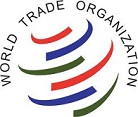
Symbol has been defined by Smith (2009) as a material object, written sign or something invisible that is used to represent something else. “The idea of ‘binding a matter with the matter’s image” is one that speaks to a more visceral aspect of symbolism and suggests a dimension of relational meaning for symbols that can play no comparable role in our understanding of a simple phonetic latter in the modern sense” (Scranton, 2010, p.47). According to Brodskaya (2007) in literature symbolism can be in forms of damnation, salvation, and reincarnation. Currently symbols are used for commercials purposes as well by many companies through associating their brands with a particular symbol or logo. Consumption can be interpreted as buying, using and interpretation of things (Aldridge, 2003) and in this sense it is a different term from a traditional economic definition of consumption. “Consumption involves consuming ideas, images on television and in advertisements” (Bocock, 1993, p.33). There are debates about the role and scope of the notion of consumption, but generally, many researchers agree on the current meaning of consumption in a way that modern identities are structured around the experience of consumption (Dunn, 1998). An interesting point relating to the issue of consumption is that it is very difficult for people to distinguish their ‘true’ and ‘false’ needs. True needs are air, water, food, sleep, and sex, without which it is impossible to live and people have to ‘consume’ them regularly, whereas ‘false’ needs are the ones created by marketing professionals, which makes people want to ‘consume’ their products or services. For instance, thirst for Coca Cola is a ‘false’ consumption need created by marketers. This is possible because people tend to express their desire through their consumption patterns. For example, if an individual desires to become a senior level executive,…

Vodafone SWOT Analysis.SWOT analysis is a technological tool through which strengths and weaknesses, as well as opportunities and threats of the business can be identified (Kotler et al, 2008). Strengths and weaknesses are considered to be internal factors affecting the company, whereas threats and opportunities are external factors. Vodafone’s leadership position in the market can be considered to be the main strength the company possesses, because due to this fact the company is better positioned to finance new projects and to introduce new services to the market. Moreover, Vodafone has a wide geographical reach and its network infrastructure is considered to be highly developed. The main weakness Vodafone has relates to its centralised management system that can cause inflexibility in today’s highly competitive marketplace. Pang (2009) informs that customer churn rate is the degree at which companies are able to retain their current customers. High level of customer churn rate is another weakness Vodafone has. However this issue is not unique to Vodafone and has negative effects to many subscriber-based service model companies. There are range of opportunities for Vodafone that if taken can improve its position in the marketplace. These opportunities include strengthening its position in new markets, forming strategic partnerships with technology and internet-related companies in order to increase the number of its services and the level of global presence of the company, and also focusing more in utilising 3G technologies. Threats to the profitability and long-term growth of the company are the level of global competition intensifying even more, market saturation in developed countries, as well as the emergence of alternative telecommunications technology. References Company Description, Vodafone Group Plc, Hoovers, Available at: http://www.hoovers.com/company/Vodafone_Group_Plc/cksxti-1.html Accessed February 12, 2011 Kotler, P, Armstrong, G, Wong, V & Saunders, J, 2008, Marketing Defined. Principles of marketing (5th ed.), Prentice Hall Pang,…

Vodafone PEST Analysis. PEST analysis is a strategic tool used to analyse external factors affecting the business and stands for political, economical social and technological factors (Lancaster et al, 2002). The main political factors affecting Vodafone include EU Roaming Regulation that aims to decrease charges for mobile phone usages abroad by 70% (Preissl et al, 2009) and increasing level of consumer rights within Europe, and decisions made by European Union Regulatory Framework for the communications sector. Moreover, any government intervention through legislation or otherwise in the markets Vodafone operates can be considered as political factors. Economical factors also affect Vodafone main of which are the growth of GDP and the level of inflation rate within markets where the company operates. Furthermore, global economic issues like the global financial crisis of 2007-2010 are also economic factors affecting Vodafone. Generally any external economic changes affecting Vodafone can be classified as external economic factors. There is a range of social factors as well that affect Vodafone. For instance, changing work patterns that are becoming very popular make people work from home increasingly relying in communication technologies. Also, there are issues like people going ‘green’ and ageing population in developed countries that are going to affect Vodafone directly or indirectly. The impact of technological factors on Vodafone is without any doubt due to the nature of the telecommunications industry. Specifically, a technological innovation in communications and emergence of alternative means of communication such as online chatting, and Yahoo! Messenger are going to affect Vodafone strategy in a way that the company is left with a choice of either to form strategic alliances with above companies or to commit to considerable amount of research and development in order to introduce innovative products and services to the market. References Lancaster, G, Massingham, L & Ashford, R, 2002,…

One of the most popular theories related to the topic of change is Lewin’s Force-Field Theory of change according to which there are two forces affecting to change at the same time (Rickards, 1999). There are driving forces that positively contribute to the change to happen and there are also restraining forces that are obstructions to change. Most of the restraining forces on individual basis have been explained above. Accordingly, in order for the change plan to succeed driving forces should be strong, restraining forces should weaken, or both of these should take place at the same time. For instance, if a company has proposed a change plan that requires employees to use new software when preparing report instead of old software the workforce is used to there are driving forces, as well as restraining forces that affect the success of this change plan. The main driving force in this case would be the fact that reports prepared with the new software would result in more detailed information for decision making, and thus create competitive edge for the company. However, restraining forces are the facts that employees are used to the old software, more time needs to be spent with the new software and the new software is more complex to use. The practical implications of this theory are that senior level management of this company should strengthen the driving force for the change which can be achieved through explaining to the workforce the advantages of the new software for decision-making and how this advantage is connected to the long-term growth of the company, and ultimately how it will affect the future of each employees. At the same time company management should minimise restraining forces through organising training for employees and teach them how to use the new software.…
By John Dudovskiy
Category: Change

Implications of Individual Resistance to Change. Because of the highly competitive nature of today’s local and global business environment constant change has become an integral part of any business strategy. Companies that refuse to change constantly according to the changing market environment risk losing their market share and customer loyalty. Therefore, today most companies understand the importance of change and try to implement changes constantly in order to improve the efficiency of their business processes. However, understanding the importance of change and having a good change plan is not enough for companies to succeed, because there are many barriers to implementing change in an organisation and individual resistance to change is one of them. “Individual sources of resistance are rooted in basic human characteristics such as needs and perceptions” (Griffin and Moorhead, 2009, p. 514). The main obstructions in the way of devising an effecting change plan and implementing it include habit, security, economic factors, fear of unknown, lack of awareness, social factors and others (Dantzker, 1999). This article analyses the implications of individual resistance to change in detail. The main factors seen as barriers to chain are analysed separately in great detail and the implications of individual resistance to change are illustrated with personal and professional examples. Moreover, strategies are discussed that can help to overcome individual resistance to change as suggested by respected scholars in the field of organisational change. Habit as Resistance to Change One of the strongest reasons for individual resistance to change is considered to be habit. “Habits are hard-wired into the basal ganglia part of the brain. In this area the brain makes connections to experiences and insights and functions effectively and efficiently without using a lot of energy” (Training, online magazine, 2009). In other words, in organisational context habits are the ways of…
By John Dudovskiy
Category: Change

The contribution of trade to the economy of a country is beyond any doubts. The positive contribution of trade to the economy of a country is done through creation of new jobs, encouraging entrepreneurial activities, and bringing new skills, knowledge and competencies into the country. Founded in 1995 World Trade Organisation (WTO) deals with the rules of trade between nations at a global or near-global level by providing a negotiating forum and helping to settle disputes. Until its formation in 1995, some of the main function of WTO including formulating the rules of international trade was performed by the General Agreement on Tariffs and Trade (GATT) since 1948 (Peng, 2009). Scope of the WTO In order to analyse at what extent WTO is contributing to the facilitation of the international trade it is necessary to establish the scope of the organisation. Currently WTO has 153 members and 30 observers, most of whom are striving to be members (Members and Observers, online 2011). Moreover, the amount of trade engaged in by WTO members account for over 97 percent of the total world trade (The Organisation, online, 2011). WTO Contribution to International Trade WTO positively contributes to international trade in many ways. However, the contribution of WTO to the facilitation of international trade can be seen by the principles that the organisation has adopted. Specifically the main Principles of WTO can be summarised in the following points: A) Trade without discrimination. WTO does not allow trade discrimination among its members. If any WTO member wishes to grant advantages to any of their partners within WTO like lower taxes for their products, all other WTO members should be granted such an advantage as well. This particular principle is also referred to as the most-favourite-nation (MFN) treatment as well. The adherence…
By John Dudovskiy
Category: International Business

The role of Internet in personal and professional lives of people has increased dramatically during the last decade and today people use Internet for many different purposes including education, shopping, communication, working, entertainment etc. Social Networking Sites have emerged as a platform for displaying individual profiles, sharing information, photos, videos, experiences among Internet users as well as forming friendships and sending messages to each-other. Having started as a display for personal achievements for members only several years ago Social Networking Sites have quickly developed and have taken new roles such as being an effective advertising tool and even a platform for political propaganda. For instance according to Esfandiari (online, 2010) political unrest in Iran following 2009 elections was partially fuelled by Facebook which resulted in government announcing Social Networking Sites as ‘hidden enemies’ of the country. Social Networking Sites have mushroomed during the last few years and today there are many global Social Networking Sites as well as sites targeting specific countries, members of specific groups and people of specific professions. However, not all Social Networking Sites are equally successful and the numbers of their members vary between several hundred and several hundred millions. The number of Social Networking Sites members depend on many factors including financing and member attraction and retention strategies each Social Networking Sites employ. The definition of Social Networking Sites are given by Hutchinson (2008) as taken by Boyd and Ellison (2007) as “web sites that allow members to construct a public or semi-public profile and formally articulate their relationship to other users in a way that is visible to anyone who can access their file” (Hutchinson, 2008, p.201). As Fellow (2010) informs initial Social Networking Sites have began appearing towards the end of 1990s with Classmates.com and SixDegrees.com where Classmates.com was assisting people with finding their former classmates, whereas the aim of SixDegrees.com was…
By John Dudovskiy
Category: E-Commerce

The VARK Questionnaire has been taken by me as a part of self-estimation process. According to Warner and DeSimone (2009), the implementation of VARK questionnaires should not be limited to educational establishments only, and workplaces should be using them as well when devising training and development programs for their employees. VARK questionnaire reveled my study strategies to be mainly kinesthetic and read/write. This result does not only reveal my study strategy, it also reveals some traits of my personality, and therefore the results are directly connected to the level of my employability. My kinesthetic and read/write study strategies positively contribute to the level of my employability due to the following reasons: Firstly, kinesthetic learners are ‘hands-on learners’ or ‘doers’ and it means that in the workplace they require minimum induction and training, therefore saving significant amount of financial resources of the organisation. Secondly, kinesthetic learners like to experiment, and this particular trait is considered to be valuable by a range of global companies like Apple and Google who encourage their employees to experiment because it leads new product development, innovational ideas and procedures. Being a kinesthetic learner experimenting is my habit as well so I can target above named global brands for my future employment. Thirdly, employers are attracted to read/write learners, due to the fact that most of the knowledge in companies in many industries is stored in a text format with which read/write learners are comfortable. I am efficient with getting knowledge through reading, and as such in a good position to secure my employment in a position of my dream. Fourthly, most of the positions in many organisations in many sectors include increased amount of writing in forms of preparing reports, writing articles and notes. And because I am comfortable with writing such kind of reports as…
By John Dudovskiy
Category: Personal reflection & development

Belbin’s Team Roles. The need for team oriented approach has developed in the recent few decades due to the fact that well organized teams are usually very high performers. Johnson et al (2008) state that for the team to be successful it can not consist of all leaders or all analytical people, but there should be harmony and right mix in order to have a successful team in place that can carry out and perform all sorts of tasks. Bloise (2007) also supports this statement and mentions that it is the job and responsibility of the senior management in the organization to ensure that they select and recruit right candidates with right levels of competencies and skills in order to fill the gap to make successful team. The idea of bringing together candidates with different backgrounds and core competencies in order to make a successful team was initially proposed by Meredith Belbin who stated that successful teams are consisted of a mix of individuals each of whom can perform a different role in the team (Hall, 2007). The Belbin’s team role also indicates that a right balance within the team where each individual will contribute their share with their specific role is very crucial. The Belbin’s Team Roles consist of nine types of roles that exist within a successful team. Even though all nine types of individuals are different from each in terms of contribution they make towards the objectives of the task, the team is expected to be high-performing. Here are the following types of team roles according to Belbin’s team roles: Coordinator in Belbin’s Team Roles The co-ordinator is a person who is considered to be a chairperson in the team who has special leadership skills. Hall et al (2007) state that co-ordinator in the Belbon’s team roles is…

Learning gained and contribution to analytical and behavioural skills I found this module informative and motivating and I believe that my knowledge and skills have increased after I attended it and done my assignment. My knowledge of marketing has been significantly expanded as a result of attending classes, to include global approach to the marketing issues. In fact, I found out that the practice of marketing for businesses has become much more complicated due to the influence of globalisation to it. I updated my knowledge in such areas of international marketing as the impact of global factors to company management decision-making, strategies of choosing and entering new markets, developing new products for international markets, the characteristics of marketing research for international markets, international marketing mix elements etc. Our group was able to find during international marketing classes that the rules of games have changed in the business world in many aspects because of opportunities and threats globalisation presents. I understood that global marketplace has become much more competitive due to the increasing forces of globalisation, technological advancements, and the increasing role of Internet in professional and private lives of people. And all of this have affected the ways decisions are taken in companies, including decisions taken by marketing executives. I started to appreciate the importance of developing global mindset for modern marketing executives as a result of becoming closely familiar with the differences of marketing in it’s traditional meaning, and international marketing. The main differences turned out to be the increasing number of factors modern markers need to take into account the speed of decision-making and requirement for modern marketing executives to be more creative. The importance of creativeness and “thinking out of box” was especially highlighted during the classes as one of the necessary attributes of modern marketers. The valuable…
By John Dudovskiy
Category: Personal reflection & development
